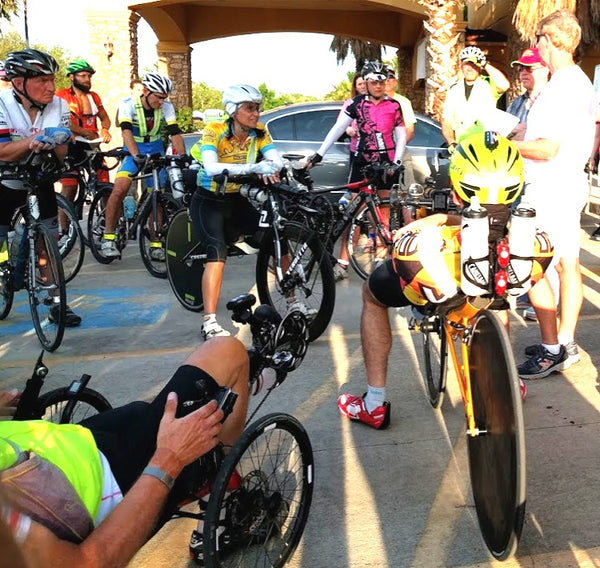The EGVA Rank System, a New Race Result Standard
April 16, 2016/ Jim Parker
The world of bicycle mechanics is full of standards that make life easier. For example, handlebar clamps, tire diameters, and cranks conform to certain sets of standards that allow parts to be interchangeable and therefore of more value. It’s nice when you can take a cassette off of one wheel, and move it to another wheel, and have it work as expected. You can thank standards for that.
Unfortunately, cycling Race Directors, the people who run the races that we enjoy participating in, have no standardized way to report cycling race results. Therefore results are often presented in a variety of formats that may be confusing, especially when participants are racing on different platforms such as standard bikes, recumbent bikes, trikes, HPVs, handcycles, etc. As recumbents and other non-traditional vehicles become more common, a new standard of result reporting is needed.
Announcing the EGVA Rank System
The EGVA Rank system (EGVA = Event, Gender, Vehicle, Age) provides a uniform and logical way to compare performance in cycling events. The main advantages of this new standard system is that it allows for the comparison of performance either including or excluding the factors of gender, vehicle-type, and age. For example, some racers may want to only see how they compare to other people of the same gender, age, and bike type; while others may want to see how they placed in the event overall without regard to the other factors.
Advantages of the EGVA Rank System
One of the obstacles in having non-traditional bikes accepted into racing events is that they can be perceived as giving a performance advantage. By clearly separating results by vehicle-type, standard bike racers can see how they compared to other standard bike racers, while also allowing for comparison to recumbents, HPVs, etc. The EGVA system gives an objective and reproducible system for comparing performance, and will make scientific comparison of results much easier. The EGVA system will also make it much easier to assemble lists of course records. Using a standard reporting system over a number of years will make it easy to determine course records for all of the various categories. Having a standard system of reporting that is inclusive of the diversity of cycling platforms will also be a selling point to the large sanctioning bodies (the UCI, USA Cycling, USAT, etc.) as we ask them to open their events to recumbents and other non-traditional cycling platforms. The EGVA Rank results can be used to allocate awards in various categories, fairly and uniformly.
How it works
Each racer (or team in relay events) has their event, gender, vehicle type, and age linked to their identifying information and their race results. This is easily done on a spreadsheet by having all of the information on the same row of data. The task of assigning the EGVA rank numbers (by the Race Director immediately after the race) is very simple using a “serial sort” spreadsheet technique. First, sort by Event and Race Result (fastest to slowest). That will be the Event (E) rank. Next, sort by Event, Gender, and Race Result. That will be the Gender (G) rank. Next, sort by Event, Gender, Vehicle, and Race Result. That will be the Vehicle (V) rank. Finally, sort by Event, Gender, Vehicle, Age-group, and Race Result. That will be the Age (A) rank.
Below – Ken Jessett (in white), Race Director at Bessie’s Creek, addresses racers before the start of the 24-Hour race. Standard bikes, trikes, recumbents, and HPVs all competed at the Bessie’s Creek race series in Brookshire, Texas, April 7-9, 2016.

Example Race Results
I will use the Bessie’s Creek 2016 results to illustrate the EGVA Rank System. This is not a criticism of the original format of race results published by the race organizers. Their results were better than average in terms of formatting and organization. Here is a link to a spreadsheet of the results. There are two worksheets (tabs at the bottom of the page) with the results listed. One is in the EGVA format, the other is the original format. You will see that the original results take up 145 lines and it is very difficult to compare performance across gender, bike type, etc. The EGVA results take up only 69 lines, and comparing various categories and their rank is easy.
Here are the results of the 24-hour race in EGVA Rank format. This provides a lot of information at your fingertips.

I hope this new system will be taken up by Race Directors all over the world. I believe it will enhance the sport of competitive cycling and make it more inclusive, diverse, and popular. I should point out that the UMCA (UltraMarathon Cycling Association) and the Race Across America are sanctioning bodies that do an excellent job of including a variety of cycling platforms, and make awards based on overall results and by category. This is how it should be.


Leave a comment